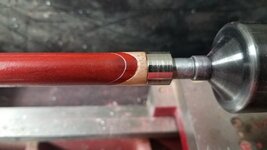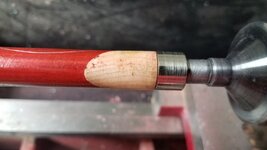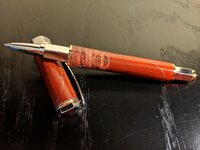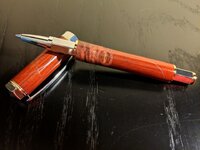JessePens
Member
This is my first attempt at a segmented pen using metal (aluminum from a beer can).
I was making this as a gift, and thought it would be neat to have a segment near the tip of curly maple. I cut it so that the end-grain would show, not realizing that I would get tearout near the thin transition sections.
I tried to repair using wood dust mixed with glue, but was unhappy with the result. The wood also had some coloration that made it look "dirty".
I ended up cutting that section off and adding a segment of red burl.
Overall, I think the end result turned out nice and I'm sure they'll be happy to receive as a free pen.
I was making this as a gift, and thought it would be neat to have a segment near the tip of curly maple. I cut it so that the end-grain would show, not realizing that I would get tearout near the thin transition sections.
I tried to repair using wood dust mixed with glue, but was unhappy with the result. The wood also had some coloration that made it look "dirty".
I ended up cutting that section off and adding a segment of red burl.
Overall, I think the end result turned out nice and I'm sure they'll be happy to receive as a free pen.




